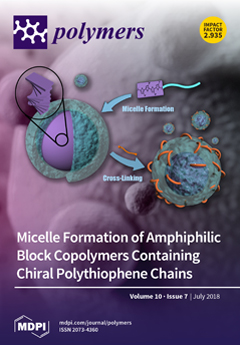1
Centro de Nanotecnología Aplicada, Facultad de Ciencias, Universidad Mayor, Huechuraba 8580000, Región Metropolitana, Chile
2
BioNanoMaterials Lab|Drug Delivery and Controlled Release, Universidad de Talca, Talca 3460000, Maule, Chile
3
Instituto de Química de Recursos Naturales, Universidad de Talca, Talca 3460000, Maule, Chile
4
Multidisciplinary Agroindustry Research Laboratory, Universidad Autónoma de Chile, Talca 3460000, Maule, Chile
5
Carrera de Ingeniería en Construcción e Instituto de Ciencias Biomédicas, Universidad Autónoma de Chile, Talca 3460000, Maule, Chile
6
Department of Clinical Biochemistry and Immunohematology, Faculty of Heatlh Sciences, Universidad de Talca, Talca 3460000, Maule, Chile
7
Center for Studies of Exercise, Metabolism and Cancer (CEMC), Universidad de Chile, Independencia 8380000, Región Metropolitana, Chile
8
Departamento de Microbiología, Facultad de Ciencias de la Salud, Universidad de Talca, Talca 3460000, Maule, Chile
Abstract
This work depicts the rational development (in-silico design, synthesis, characterization and in-vitro evaluation) of polyvinyl alcohol hydrogels (PVAH) cross-linked with maleic acid (MA) and linked to γ-cyclodextrin molecules (γ-CDPVAHMA) as systems for the controlled and sustained release of nifedipine (NFD). Through computational studies,
[...] Read more.
This work depicts the rational development (in-silico design, synthesis, characterization and in-vitro evaluation) of polyvinyl alcohol hydrogels (PVAH) cross-linked with maleic acid (MA) and linked to γ-cyclodextrin molecules (γ-CDPVAHMA) as systems for the controlled and sustained release of nifedipine (NFD). Through computational studies, the structural blocks (PVA chain + dicarboxylic acid + γ-CD) of 20 different hydrogels were evaluated to test their interaction energies (Δ
E) with NFD. According to the Δ
E obtained, the hydrogel cross-linked with maleic acid was selected. To characterize the intermolecular interactions between NFD and γ-CDPVAHMA, molecular dynamics simulation studies were carried out. Experimentally, three hydrogel formulations with different proportions of γ-CD (2.43%, 3.61% and 4.76%) were synthesized and characterized. Both loading and release of NFD from the hydrogels were evaluated at acid and basic pH. The computational and experimental results show that γ-CDs linked to the hydrogels were able to form 1:1 inclusion complexes with NFD molecules. Finally, γ-CDPVAHMA-3 demonstrated to be the best pH-sensitive release platform for nifedipine. Its effectiveness could significantly reduce the adverse effects caused by the anticipated release of NFD in the stomach of patients.
Full article






